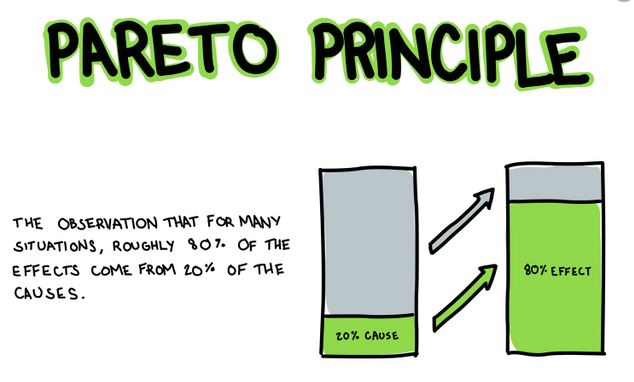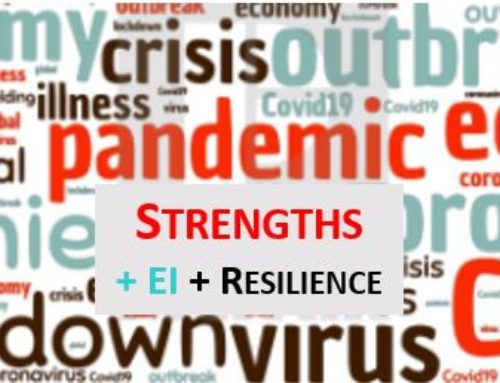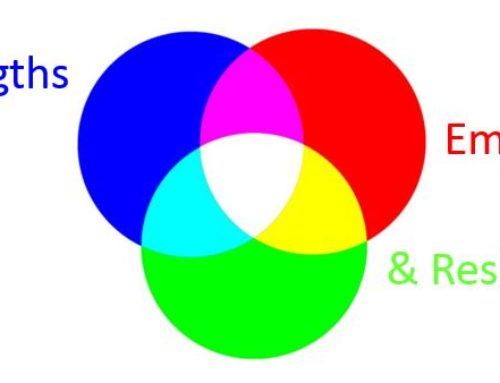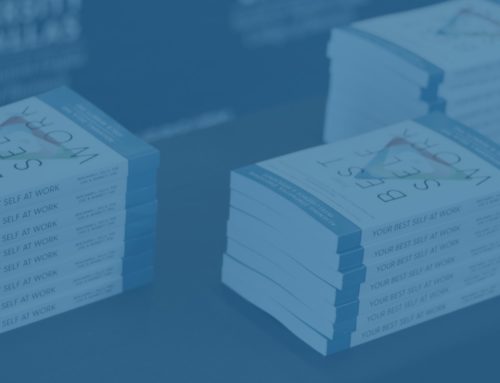Using the 80/20 Rule to Increase Effectiveness
Most students of management are familiar with Pareto’s Principle or the 80/20 Rule, stating that 80% of the value comes from 20% of the inputs. For example, it’s common with most companies that 20% of your customers are responsible for 80% of your sales. Likewise, we often see that 20% of employees produce 80% of results (and you want to take especially good care of those employees from the standpoint of financial rewards and future opportunities!). We see Pareto’s Principle at work in many areas of life. I think about my undergraduate education and a handful of courses that left a lasting impact (so much so that I still have the textbooks on my shelf today): Intro to Psychology (a captivating class – thanks to a great teacher – that drove my choice of a major) Leadership Concepts and Applications (a focus within psychology that I found fascinating and which ultimately became the unifying theme of my professional career) Developmental Psychology and Tests & Measurements (both courses influenced my perspective on human development and the use of assessments to support growth) In fact, we also see Pareto’s Principle at work in the field of leadership development. Individual results are largely (80%) driven by a person’s talents and strengths that are most distinctive to them (20%), not the other characteristics where they would measure as average or typical relative to others. I believe the process of discovering, refining, and enhancing one’s strengths is a lifetime endeavor. My experience in working with others as a leadership coach tells me that Pareto’s Principle also applies in another way to one’s strengths and achieving greater effectiveness. A careful examination of the development of popular strength assessments shows that strengths represent 80% of how we might characterize an individual from the standpoint of enduring traits and personality. Both Gallup’s CliftonStrengths® and the VIA Individual Strengths (VIA-IS) assessments tap into four of the “Big Five” factors of personality that have been utilized for decades to understanding the most stable and enduring characteristics at the core of each of us. That’s exactly 80%. For example, CliftonStrengths® themes are divided into four domains that correlate with four of the Big Five Dimensions: Strategic Thinking themes, which represent Openness to Experience (or intellectual curiosity) Executing themes – Conscientiousness Relationship Building – Agreeableness Influencing – Extraversion (particularly dominance or assertiveness) The factor that is not represented in most strength assessments is the dimension of Emotional Stability. This factor represents not so much what we do in employing our strengths but how we do it, especially in times of challenge, difficulty, and emotional turmoil (such as a worldwide pandemic, economic uncertainty, etc.). As with other aspects of personality, that means each of us has a tendency or predisposition that is innate to us – in this case, the extent to which we are affected by emotional events and circumstances around us. Some people are very stable and steady in the midst of emotional situations; others are more affected, anxious, and moody in such circumstances. Most of us are somewhere in the middle, meaning that we are generally stable but likely have certain emotional triggers that affect us sometimes. As with other aspects of personality, our innate tendency with Emotional Stability is the foundation for our behavior and skills. Whatever your tendency might be – very stable, highly reactive, or somewhere in between – each of us is capable of changing behaviors and building skills that allow us to function better in the realm of emotions. These are the skills of emotional intelligence and resilience. Developing the skills of emotional intelligence and the practices that support resilience is the magic 20% that can drive 80% of effectiveness, even in the use of your unique talents and strengths. To explore this idea more, contact me directly for an excerpt of my soon-to-be-released book with Joel Bennett, Your Best Self at Work: Aligning Strengths, Emotional Intelligence & Resilience. The excerpt includes the chapter examining the link between personality and strengths and introducing the critical dimension of emotional stability that can make your strengths even more effective. © 2021, Benjamin L. Dilla, PhD
Continue Reading


Let’s Talk
If you would like additional information or have questions about coaching, team building, training workshops, or speaking engagements, schedule a free 30-minute discovery call.
Let’s Talk
If you would like additional information or have questions about coaching, team building, training workshops, or speaking engagements, schedule a free 30-minute discovery call.






